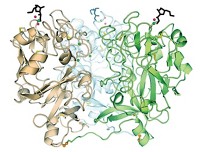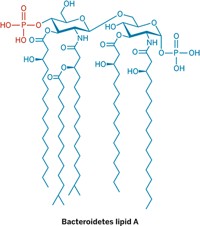Advertisement
Grab your lab coat. Let's get started
Welcome!
Welcome!
Create an account below to get 6 C&EN articles per month, receive newsletters and more - all free.
It seems this is your first time logging in online. Please enter the following information to continue.
As an ACS member you automatically get access to this site. All we need is few more details to create your reading experience.
Not you? Sign in with a different account.
Not you? Sign in with a different account.
ERROR 1
ERROR 1
ERROR 2
ERROR 2
ERROR 2
ERROR 2
ERROR 2
Password and Confirm password must match.
If you have an ACS member number, please enter it here so we can link this account to your membership. (optional)
ERROR 2
ACS values your privacy. By submitting your information, you are gaining access to C&EN and subscribing to our weekly newsletter. We use the information you provide to make your reading experience better, and we will never sell your data to third party members.
Biological Chemistry
Delving Into D-Amino Acids
Biochemistry: Bacteria use right-handed amino acids to build and regulate part of their cell wall
by Sarah Everts
September 21, 2009
| A version of this story appeared in
Volume 87, Issue 38
Ever since researchers discovered that the biological world makes use of L-amino acids to form proteins, mirror-image D-amino acids have mostly been relegated to the sidelines by biochemists. But new work is now adding weight to the idea that D-amino acids play vital roles in biological processes.
Vibrio cholerae, the bacterium responsible for cholera, uses D-methionine and D-leucine as mortar to strengthen a layer of peptidoglycan that provides structural support to its cell walls, a team of researchers led by Matthew K. Waldor of Harvard Medical School reports in Science (2009, 325, 1552). The team finds that these D-amino acids also regulate enzymes that build the peptidoglycan scaffolding. When the D-amino acids are present, construction slows to a stop.
Use of D-amino acids is not just a quirk of V. cholerae. The team finds that Bacillus subtilis, an evolutionarily unrelated microbe, also uses the two D-amino acids.
In fact, because the microbes also export the D-amino acids in “remarkably high concentrations,” the work “provides evidence that bacteria are modifying not only the cell wall metabolism of their own cells but also those of their symbionts and bacterial competitors,” comments Rodney A. Welch, a microbiologist at the University of Wisconsin, Madison.
“This could be the tip of the iceberg” for the role of these D-amino acids, Waldor says. He’s now investigating whether bacteria use D-methionine and D-leucine in chemical communication as quorum-sensing molecules.
Tasks previously known to be performed by D-amino acids include the activation of pathogenic Escherichia coli by D-serine, the use of D-serine in mammalian neurotransmission, and the use of D-glutamate by Bacillus anthracis to build a protective capsule.
“The continuing discovery of additional functions for D-amino acids will continue to challenge the notion that D-amino acids have been largely irrelevant during the rise of the left-handed protein universe,” says Steven R. Blanke, a microbiologist at the University of Illinois, Urbana-Champaign, in an associated commentary in Science.







Join the conversation
Contact the reporter
Submit a Letter to the Editor for publication
Engage with us on Twitter